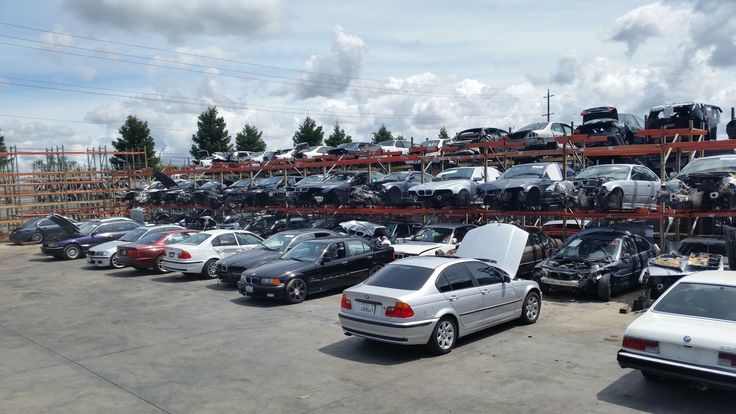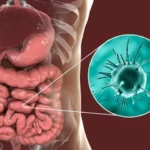When a vehicle reaches the end of its life or becomes too expensive to maintain, many car owners choose to sell it for cash. This choice is common across Australia, particularly in urban and regional areas where old vehicles can become an eyesore or occupy much-needed space. But have you ever wondered what really happens to the parts of your car after it leaves your driveway? The journey of your vehicle does not end there — in fact, it starts a completely new chapter.
This article explores what happens to various car components after it is sold to a cash-for-cars service. You will also discover how these services contribute to environmental efforts, the auto parts industry, and the wider economy.
1. Initial Inspection and Sorting Process
Once a vehicle is picked up, it is taken to a holding yard or recycling facility. The first step is a detailed assessment of the car’s condition. During this stage, the team determines which parts are still functional and which ones have deteriorated beyond use.
This is not just about the engine or gearbox. Smaller components like mirrors, door handles, window regulators, headlight units, and sensors are also inspected. Modern vehicles contain many electronic modules and sensors that are valuable when in working condition.
The car is then categorised based on make, model, and year, helping staff identify whether there is a demand for specific parts. This helps in deciding how much of the car will be stripped and what will go to recycling.
2. Removal of Reusable Car Parts
Parts that are still in good condition are removed from the vehicle before it is dismantled further. These include:
- Engines and Transmissions: If these are still operational, they can be cleaned, tested, and reconditioned.
- Alternators, Starters and Radiators: These are commonly resold as second-hand parts.
- Tyres and Rims: If tyres still have tread life, they are inspected and offered as used spares.
- Seats, Dashboards and Trim: Interior parts often find a second life in similar models.
- Battery and Electronics: Batteries in reasonable condition are tested and reused or recycled.
- Lights and Panels: Panels with minimal damage and working lights are removed for resale.
These components are labelled, catalogued, and stored in parts warehouses. In many cases, they are sold to workshops or directly to customers looking for replacement parts.
3. Fluids and Hazardous Materials
Before a car shell can be sent to be crushed or shredded, all fluids need to be removed. These include:
- Engine oil
- Brake fluid
- Transmission oil
- Coolant
- Windshield washer fluid
- Air conditioning gases
These liquids are collected using specialised equipment and disposed of following environmental regulations. Some of the fluids, like engine oil, may be refined and used again in industrial applications. Others, like air conditioning gas, must be handled carefully due to strict environmental laws.
Visit this page to learn more: https://onspotcashforcars.com.au/cash-for-cars-ascot/
4. Metal Recovery and Recycling
After the usable parts and fluids are taken out, what remains is mainly the vehicle’s frame and metal components. This includes:
- Chassis
- Suspension arms
- Exhaust system
- Body panels
The metal body is crushed or shredded into smaller pieces. It is then sent to metal processing plants, where it is melted down and reused in the manufacturing of steel products. This can include construction materials, new car frames, or even household items.
This metal recovery process helps reduce the need for new raw materials, which has a direct effect on reducing greenhouse gas emissions.
5. Plastic, Rubber and Glass Components
Although metal makes up most of the car’s structure, there are other materials that also get recycled:
- Plastic parts: These are sorted by type and processed for use in various plastic products.
- Rubber from tyres: Can be turned into playground surfacing or road materials.
- Glass: Windows and windshields are crushed, melted, and reused in construction or manufacturing.
Recycling these materials helps keep them out of landfill and reduces environmental impact.
6. Resale of Second-hand Parts
Many used car parts removed from vehicles end up being sold in the second-hand market. This helps car owners find cheaper parts for repairs. Australia’s demand for used auto parts has grown over the years, particularly for Japanese and European vehicle brands.
Workshops and mechanics often source parts from these yards when looking to repair cars at a lower cost for their customers. This also supports the sustainability of older vehicles that may not have new replacement parts readily available.
7. Vehicles with Severe Damage or Fire
Some cars that are badly damaged due to fire, flood, or major collision may not yield many usable parts. However, they are still broken down for recyclable materials. Even in the worst cases, certain metal sections, rubber components, and fluids can be recovered safely.
8. How This Helps the Environment and Community
Selling an old car for parts recycling helps reduce environmental strain. When car parts are reused, it lowers the need to manufacture new parts, which saves energy and resources. Recycling also keeps harmful substances like oil and coolant from polluting soil and water.
Car removal and dismantling yards often employ local workers, supporting the economy. Parts that are sold locally also reduce the need for international shipping, which cuts down on emissions.
9. Example from Logan: Car Wreckers Doing Their Part
In Logan, car wreckers have become a key part of local vehicle recycling. One company, which operates under the service of car wreckers Logan, has created a system that sorts, processes, and redistributes vehicle parts effectively. Their approach ensures that even vehicles beyond repair are still useful. By focusing on proper dismantling, they help reduce landfill waste while offering spare parts to customers across Brisbane and surrounding suburbs.
Their presence in the Logan area shows how local services can contribute to wider recycling goals while meeting the needs of car owners with unwanted or non-working vehicles.
Conclusion
When you sell your car for cash, it does not simply disappear — it gets a second life in many forms. Whether it is a working engine, a set of tyres, or even just scrap metal, almost every part of your car serves a purpose. The auto recycling industry plays an important role in environmental care and continues to grow as more people choose responsible disposal methods.
By understanding what happens after your vehicle is taken away, you can feel more confident that your old car is not just discarded but transformed into something useful again.















Leave a comment